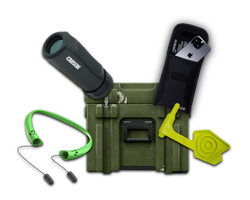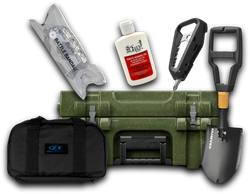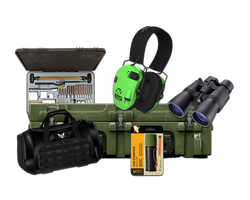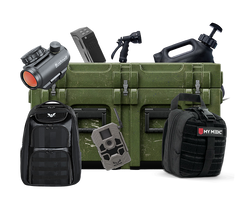How to Clean a Sleeping Bag: A Comprehensive Guide for Outdoor Enthusiasts
Table of Contents
- Introduction
- Understanding Your Sleeping Bag
- How Often Should You Clean Your Sleeping Bag?
- Preparing to Clean Your Sleeping Bag
- Step-by-Step Guide on How to Clean a Sleeping Bag
- Additional Care Tips
- Conclusion
- FAQ
Introduction
Imagine this: you've just returned from a thrilling camping trip, your sleeping bag swathed in the scents of the great outdoors, dirt, and perhaps a little too much campfire smoke. While the memories of your adventure are fresh in your mind, your sleeping bag likely needs some attention. How can you effectively clean your sleeping bag to ensure it remains a reliable companion for all your future outdoor escapades?
Caring for your sleeping bag is not just about hygiene; it's essential for maintaining its insulation properties and ensuring its longevity. With various materials like down and synthetic fibers, the cleaning process might differ, making it critical to understand the best practices for each type. This guide will equip you with the knowledge to clean your sleeping bag effectively, whether it’s a basic polyester model or a premium down-filled masterpiece.
In this post, we'll delve into the specifics of cleaning sleeping bags, from understanding the materials and maintenance tips to step-by-step cleaning instructions. By the end, you'll be well-prepared to tackle the task of cleaning your sleeping bag, ensuring it remains in top condition for years to come.
Understanding Your Sleeping Bag
Types of Sleeping Bags
Before diving into cleaning methods, it's essential to understand the different types of sleeping bags and their materials. This knowledge will guide you in selecting the appropriate cleaning technique.
1. Down Sleeping Bags
Down sleeping bags are filled with the soft under-feathers of ducks or geese. They are known for their lightweight and excellent insulation properties, making them a favorite among backpackers and campers. However, down requires special care when cleaning, as it can lose its loft and insulating abilities if not washed correctly.
2. Synthetic Sleeping Bags
Synthetic sleeping bags, typically filled with polyester fibers, are generally more affordable and easier to care for than down bags. They dry faster and maintain their insulating properties when wet. This type of bag is often recommended for beginners or those who camp frequently in humid conditions.
Importance of Cleaning
Cleaning your sleeping bag is vital for several reasons:
- Hygiene: Dirt, sweat, and oils can accumulate over time, leading to unpleasant odors and potential skin irritations.
- Performance: A clean sleeping bag retains its insulation properties better, ensuring warmth and comfort during cold nights.
- Longevity: Regular maintenance can extend the life of your sleeping bag, allowing you to enjoy your investment for many camping trips to come.
How Often Should You Clean Your Sleeping Bag?
The frequency of cleaning your sleeping bag depends on how often you use it. Here are some general guidelines:
- Seasonal Use: If you use your sleeping bag for several trips each season, aim to wash it once every few months.
- Occasional Use: For infrequent campers, a good cleaning once a year should suffice.
- Spot Cleaning: In between deep cleans, consider spot cleaning any noticeable stains or odors.
Preparing to Clean Your Sleeping Bag
Read the Care Label
The first step in cleaning your sleeping bag is to consult the care label. This label provides specific instructions from the manufacturer about washing and drying methods, which are crucial for maintaining the bag's integrity.
Gather Your Supplies
Before you start, gather the following supplies:
- Mild detergent or specialized sleeping bag cleaner: Avoid regular laundry detergent, as it may strip oils from down and synthetic fills.
- Tennis balls: These help to fluff the bag during the drying process.
- A washing machine: Ideally, use a front-loading machine without an agitator to prevent damage.
- A large space for drying: If your bag doesn't fit in the dryer, you will need a large area to hang it up.
Step-by-Step Guide on How to Clean a Sleeping Bag
Step 1: Spot Cleaning
Before washing the entire bag, assess it for any stains or heavily soiled areas. Use a soft brush or a cloth dipped in a mild detergent solution to gently scrub these areas. This step helps to remove localized dirt before the full wash.
Step 2: Washing Your Sleeping Bag
For Synthetic Sleeping Bags:
- Machine Wash: Place your sleeping bag in a front-loading washing machine. Avoid top loaders with agitators, as they can damage the fabric and seams.
- Choose the Right Cycle: Select a gentle cycle with cold or warm water. Hot water can damage the fabric.
- Use the Right Detergent: Add a specialized detergent for synthetic materials or a small amount of mild detergent. Avoid fabric softeners and bleach.
For Down Sleeping Bags:
- Hand Wash Recommended: While some down bags are machine washable, it's often safer to hand wash. Fill a bathtub or large basin with lukewarm water and add a down-specific cleaner.
- Soak: Submerge the sleeping bag and gently knead it to allow the soap to penetrate the fibers. Avoid wringing or twisting.
- Rinse Thoroughly: Drain the tub and refill it with clean water. Rinse the bag several times until all soap is removed.
Step 3: Drying Your Sleeping Bag
Drying is a crucial part of the cleaning process. Improper drying can lead to clumping of the fill, especially in down bags.
- Tumble Dry: If your bag is machine washable, place it in a dryer on a low heat setting. Add a couple of clean tennis balls to help fluff the bag as it dries.
- Check for Dampness: Periodically check the bag to ensure it is drying evenly. If it remains damp, continue drying it and rearranging it for airflow.
For Air Drying:
If you prefer not to use a dryer, hang your sleeping bag in a well-ventilated area out of direct sunlight. This method takes longer but is safer for the material.
Step 4: Storing Your Sleeping Bag
Once your sleeping bag is clean and completely dry, store it properly to maintain its loft and insulation properties. Avoid compressing it in a stuff sack for long periods; instead, use a large cotton storage sack or hang it up in a closet.
Additional Care Tips
- Use a Liner: Consider using a sleeping bag liner to keep your bag cleaner for longer. Liners are easier to wash and can add warmth.
- Avoid Food and Drinks: Keep food and drinks away from your sleeping bag to minimize stains and odors.
- Air It Out: After each use, air out your sleeping bag to prevent moisture buildup and odors.
Conclusion
Cleaning your sleeping bag might seem daunting, but with the right knowledge and tools, it can be a straightforward process. By understanding the materials, following proper washing techniques, and storing your bag correctly, you can ensure that it remains a dependable companion on all your outdoor adventures.
Taking care of your sleeping bag not only enhances your camping experience but also extends the life of your gear. So, before you head out on your next trip, make sure your sleeping bag is clean, fresh, and ready to provide you with the comfort you need after a day in the wild.
FAQ
How often should I clean my sleeping bag?
You should clean your sleeping bag once every few months if used frequently, or at least once a year for occasional use.
Can I machine wash my down sleeping bag?
Yes, but it’s often safer to hand wash. If you machine wash, use a front-loading machine on a gentle cycle.
What type of detergent should I use?
Use a mild detergent or a specialized sleeping bag cleaner. Avoid fabric softeners and bleach.
How can I remove odors from my sleeping bag?
Spot cleaning any stained areas and airing out your bag after each use can help. Baking soda can also be used as a deodorizer.
How should I store my sleeping bag?
Store it in a large cotton sack or hang it up to avoid compressing it for long periods. Avoid using a stuff sack for storage.
Can I dry my sleeping bag in the dryer?
Yes, you can tumble dry on low heat; just be sure to add tennis balls to help fluff it. Always check for dampness and rearrange frequently.
Taking care of your sleeping bag is crucial for maintaining its functionality and longevity. For more tactical gear and survival tools that can enhance your outdoor experience, consider exploring Crate Club's subscription services and shop for the best tactical gear tailored to your adventures.
Share this article



